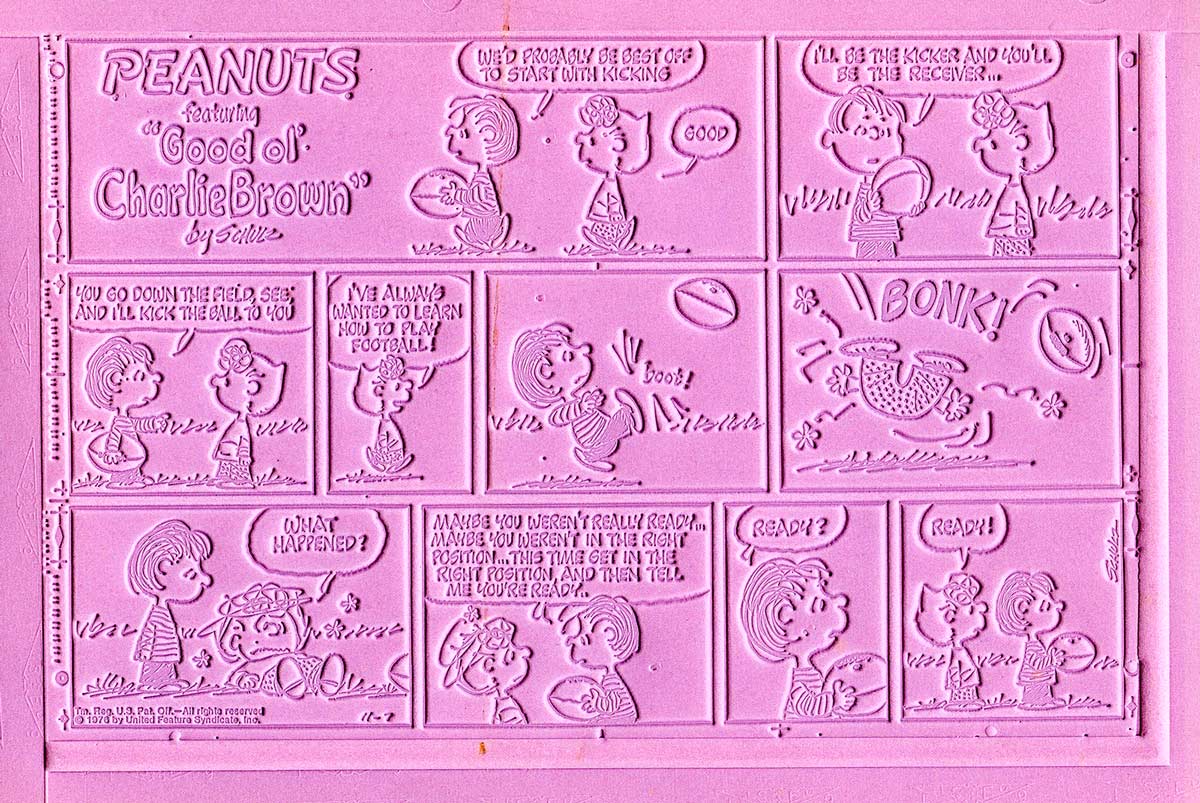Sponsor: How Comics Were Made by Glenn Fleishman ⇥ glog.glennf.com
Priced originally at $65, it’s currently on sale for $39 (plus shipping) — no coupon is required.
Several years ago, I came across the word flong, and my life was changed. It led me to pose the question: Before photographic reproduction, how did newspaper comics syndicates in the era of metal relief printing send out cartoons to the hundreds or thousands of papers that printed a strip every day?
Finding the answer was a wonderful journey that led to my book How Comics Were Made. The book traces comics history from the 1890s to the present day and all the Rube Goldberg systems that allowed a cartoonist to draw a line and have it appear on newsprint—and now on a display. It’s a visual history of mostly forgotten printing history, the recovery of fascinating stories (such as why Garry Trudeau had to pull a week of Doonesbury strips in 1973 at the last minute), and an oral history by cartoonists who started their careers from the 1960s to the 2000s.
(And what is flong? A printing mold material made in sheet form from a wood pulp composite. Under great pressure, flong was pushed onto a raised metal plate. The result was sent to newspapers who poured hot lead in to make a reproduction of the original—a kind of metal photocopying.)
